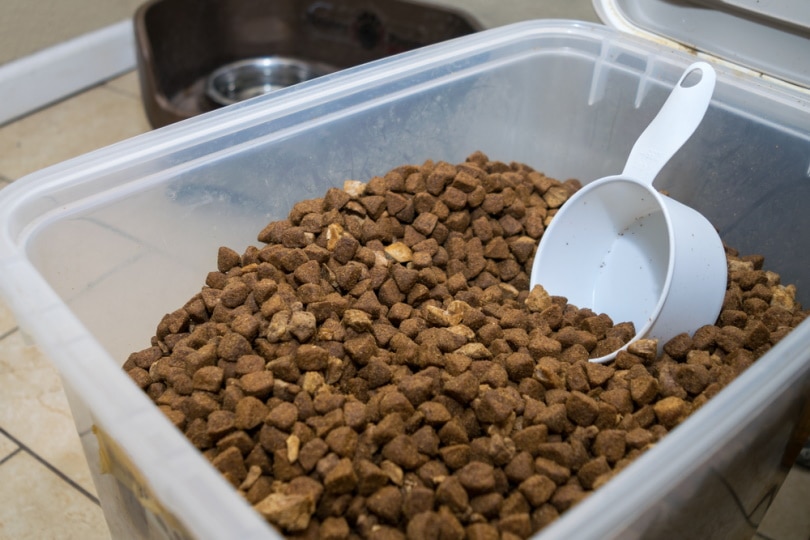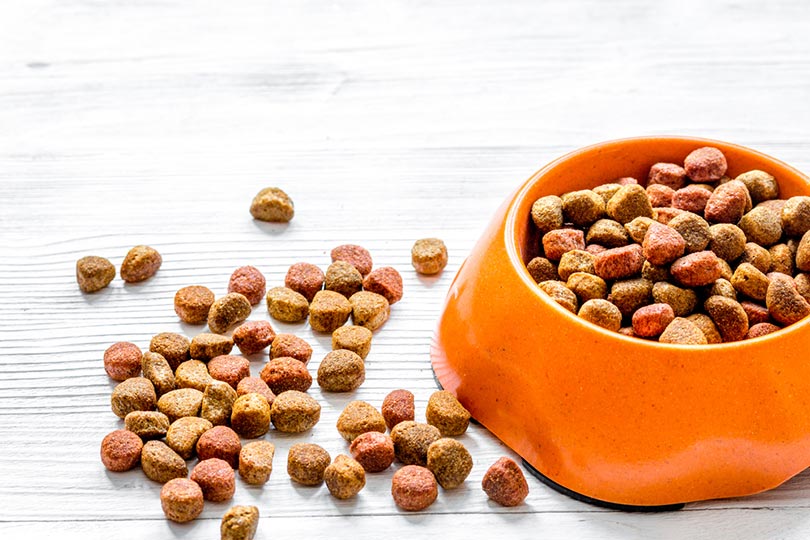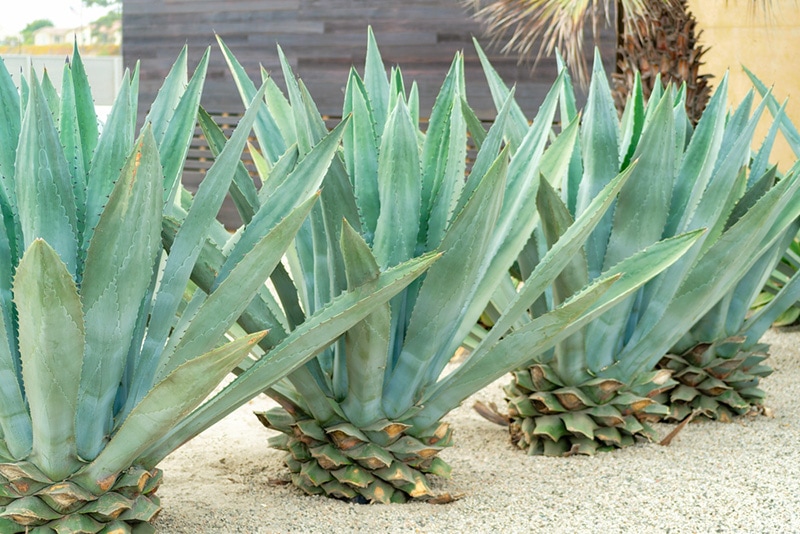Pet owners are putting more effort into their pets, including choosing high-quality pet foods to help them live a long and happy life. With many dog foods on the market, choosing the best choice can be overwhelming.
Fortunately, just a little knowledge of pet food ingredients can help you make an informed decision for your dog’s health and wellbeing. Here are the six key ingredients you should avoid in your dog food and why. If you have questions about what to avoid in dog food, it is always advisable to speak to your personal vet.
The 6 Key Ingredients You Should Avoid in Dog Food
1. Melamine

| FDA Approved? | No |
| Ingredient type | Chemical |
Melamine is an industrial chemical that isn’t approved as an ingredient in animal or human foods in the United States. Despite this, melamine and related compounds have been found in pet food and prompted recalls.
Following the investigation, melamine was found in the kidneys and urine of cats that had died, though it’s not necessarily the cause of the illness and death. The FDA is doing further investigations into melamine and melamine-related compounds and their potential effects, but it’s best to avoid this ingredient (and its potential sources).
2. BHA, BHT, and Ethoxyquin

| FDA Approved? | Yes, in small doses |
| Ingredient type | Preservative |
BHA, BHT, and ethoxyquin are artificial preservatives that are used to extend the shelf life of dog food and treats. These ingredients are considered safe in small doses according to the FDA, but there have been concerns about its potential carcinogenic (cancer-causing) effects and the potential for skin and eye irritation.
Ethoxyquin, in particular, is also used as a pesticide and herbicide. Its effects have been investigated—though not sufficiently—since the 1980s after pet owners complained of adverse effects. Following that, pet food manufacturers opted for tocopherols as an alternative.
3. Propylene Glycol

| FDA Approved? | Yes |
| Ingredient type | Additive |
Propylene glycol is an artificial additive used to maintain texture and keep food soft and moist. It’s generally considered safe by the FDA and the veterinary community. In small doses, propylene glycol causes no ill effects in dogs, but the dosage matters, too. Propylene glycol is unavoidable in some veterinary medications, but you have control over whether you want it in your dog food.
Though derived from ethylene glycol (antifreeze), which is highly toxic to pets, it’s not the same compound. In fact, it’s often used as a pet-friendly alternative to antifreeze.
4. Meat Meal

| FDA Approved? | Yes |
| Ingredient type | Animal protein |
Meat meals are often found on dog food ingredient lists, especially chicken or fish meal. These are created using a process called “rendering” to convert waste animal tissue into stable, usable material. This typically includes the butcher shop trimmings, grease, fatty tissue, bones, blood, fat, hair, and offal.
Unfortunately, it may also include entire carcasses of animals that have died or were diseased, and you can’t tell just from the ingredient list. The USDA has regulations regarding what can be rendered, but different source countries may have different standards. In addition, the meat meal offers inconsistent nutrition based on the animal parts it contains.
5. MSG

| FDA Approved? | Yes |
| Ingredient type | Flavoring |
Monosodium glutamate (MSG) is approved for use in both human and dog food to enhance the flavor. MSG has no nutritional benefit, not to mention that it may be used to disguise low-quality ingredients.
MSG is controversial in food and associated with different types of toxicity, as well as obesity, metabolic disorders, and neurotoxic effects. Multiple studies have hinted at possible toxic effects, and since it offers no nutritional value, it’s best to avoid it completely.
6. Food Dyes

| FDA Approved? | Yes |
| Ingredient type | Artificial and natural color |
The FDA and AAFCO have an approved list of artificial and natural food colors permitted in dog food. They’re strictly regulated and at this time have been shown to be safe for dogs.
Still, food dyes have come under fire in the past. Some studies have revealed that different dyes, such as Red 3 and Red 40, are linked to health problems or cancer. Some dyes permitted in the US are banned in other countries as well. The approved dyes may be considered safe now, but that’s not to say that they won’t show a link to health problems in the future. Furthermore, there’s no nutritional benefit for food dyes in dog food. They’re only included to make the food more visually appealing to humans.
How to Read a Dog Food Ingredient Label
The government regulates the minimum amount of nutrients that pet foods must contain and oversees the maximum amount of moisture and crude fiber. Dog food labels must display the percentage of crude protein, crude fat, crude fiber, and water.
If a label has specific guarantees, such as low fat, the maximum and minimum percentages must be guaranteed. The same is true of a guarantee of vitamins or minerals in specific formulas.
Ingredients on the label must be listed in descending order by weight. The ingredients must be listed individually—no collective ingredients like “animal protein products” are permitted. Ingredients must also have a common name, such as “vitamin A” and not “retinol.” With this in mind, the most important ingredients are first on the list.

What About Organic, Natural, or Human-Grade Dog Food?
With dog food, some words and phrases are marketing hype, and others are regulated and standardized.
If dog food says it’s “complete and balanced,” it means it meets the government standards to provide complete and balanced nutrition for adult dogs according to AAFCO standards. AAFCO also recognizes the different stages of development and their nutritional needs, such as puppy food or adult maintenance food.
When it comes to a “senior” food, however, the FDA only requires the diet to meet adult maintenance nutrition.
Organic food is a little different. There are no official regulations for the labeling of organic foods for pets. However, dog foods that claim to be organic must meet the USDA’s National Organic Program to be considered organic, which is the same for organic human food.
Natural is different from organic and unregulated. “Natural” could mean free of artificial flavors, colors, and preservatives, but there’s nothing holding the manufacturer to a standard. Also, keep in mind that natural isn’t always better. Arsenic occurs naturally in many foods, and some “chemical-sounding” names are simply the technical name for essential vitamins and minerals.
Human-grade dog food is highly regulated by the FDA and USDA. For a food to be considered human edible, all ingredients must be human edible and the food must be manufactured, packed, and held in accordance with the Current Good Manufacturing Practice in Manufacturing, Packing, or Holding Human Food.
Brands can—and do—make this claim. A few pet food brands have met the standards for human edible food, but not all. These foods tend to be more expensive, and they’re not necessarily safer or healthier.
Conclusion
There’s a ton of variety with commercial dog food. Though some ingredients may be controversial, the FDA does regulate commercial dog food to ensure proper nutrition and safety. Always speak with your vet about your dog’s diet to ensure that you’re choosing the best food for their life stage and health.
See also:
- Can You Put Bacon Grease on Dog Food? What You Need to Know!
- Can You Put Coconut Oil in Dog Food? What You Need To Know!
Featured Image Credit: Daria Lixovetckay, Shutterstock











